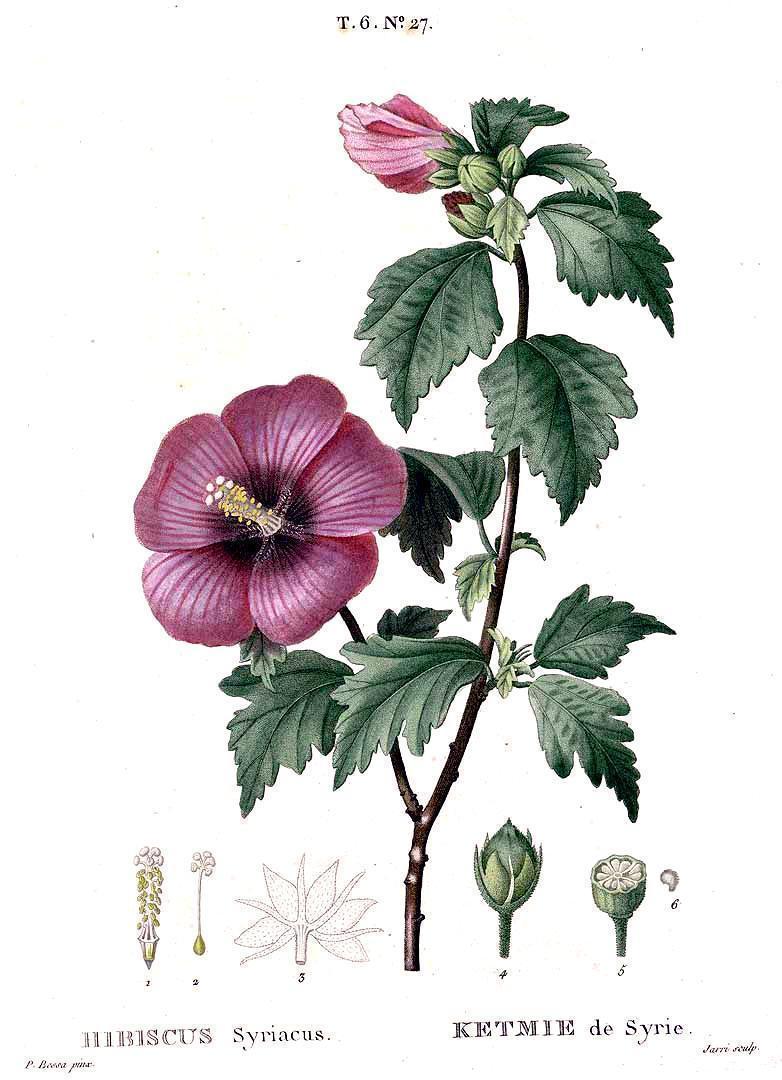Hibiscus syriacus L.
MalvaceaeEsta planta de magnífica flor es una especie de origen asiático de uso exclusivamente ornamental y de gran valor simbólico en Oriente: los hindúes ofrecen a sus deidades Kali y Ganesha hibiscos rojos. En Corea del Sur es la flor nacional. En América, adonde llegó desde Europa, es conocida esta flor como malva real de Sevilla. Como hibisco es nombrado por Dioscórides, en su Materia médica, en realidad refiriéndose a la altea. El tratado de este botánico y médico griego del siglo I d.C. llegó al mundo musulmán a través del Imperio Bizantino, con capital en Constantinopla. Fue traducido al árabe en Bagdad en el siglo IX durante el califato abasí por el griego Esteban, aunque de manera no muy satisfactoria. En el año 929 Abd al Rahman III, de la dinastía siria de los omeyas, se autoproclamó califa, jefe de los creyentes, en Córdoba, ciudad que ya se había transformado en uno de los centros de saber de la Edad Media. Es, en esa época, cuando llega a al-Andalus un primer tratado de Dioscórides en griego, regalo del emperador de Constantinopla al califa de Córdoba en reconocimiento de la importancia de su reino. Al poco tiempo llegará a Córdoba un monje llamado Nicolás, también enviado directamente desde Bizancio por el emperador a petición de Abd al Rahman III, con el fin de traducir la Materia Médica. Así se obtuvo un mejor conocimiento botánico y medicinal de las propiedades de las plantas y se confirmaba, a su vez, el prestigio de Córdoba y al-Andalus como lugares de salvaguarda de la cultura clásica.
Procedencia
Oriental/AsiáticoCalendario
Hábitat
Morfología
 Arbusto
Arbusto
 Abanico
Abanico
 Simple
Simple
 Triangular
Triangular
 Romboidal
Romboidal
 Alterna
Alterna
 Dentado
Dentado
 Lobado
Lobado
 Serrado
Serrado
 Atenuada
Atenuada
 Acuminado
Acuminado
 Agudo
Agudo
 Perenne
Perenne
